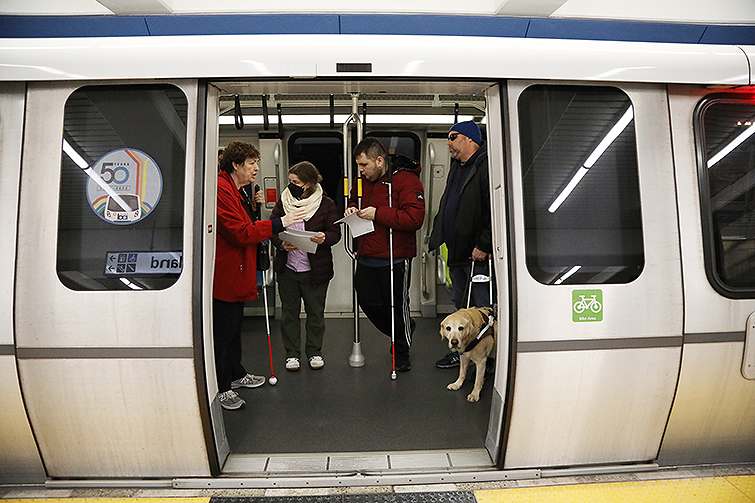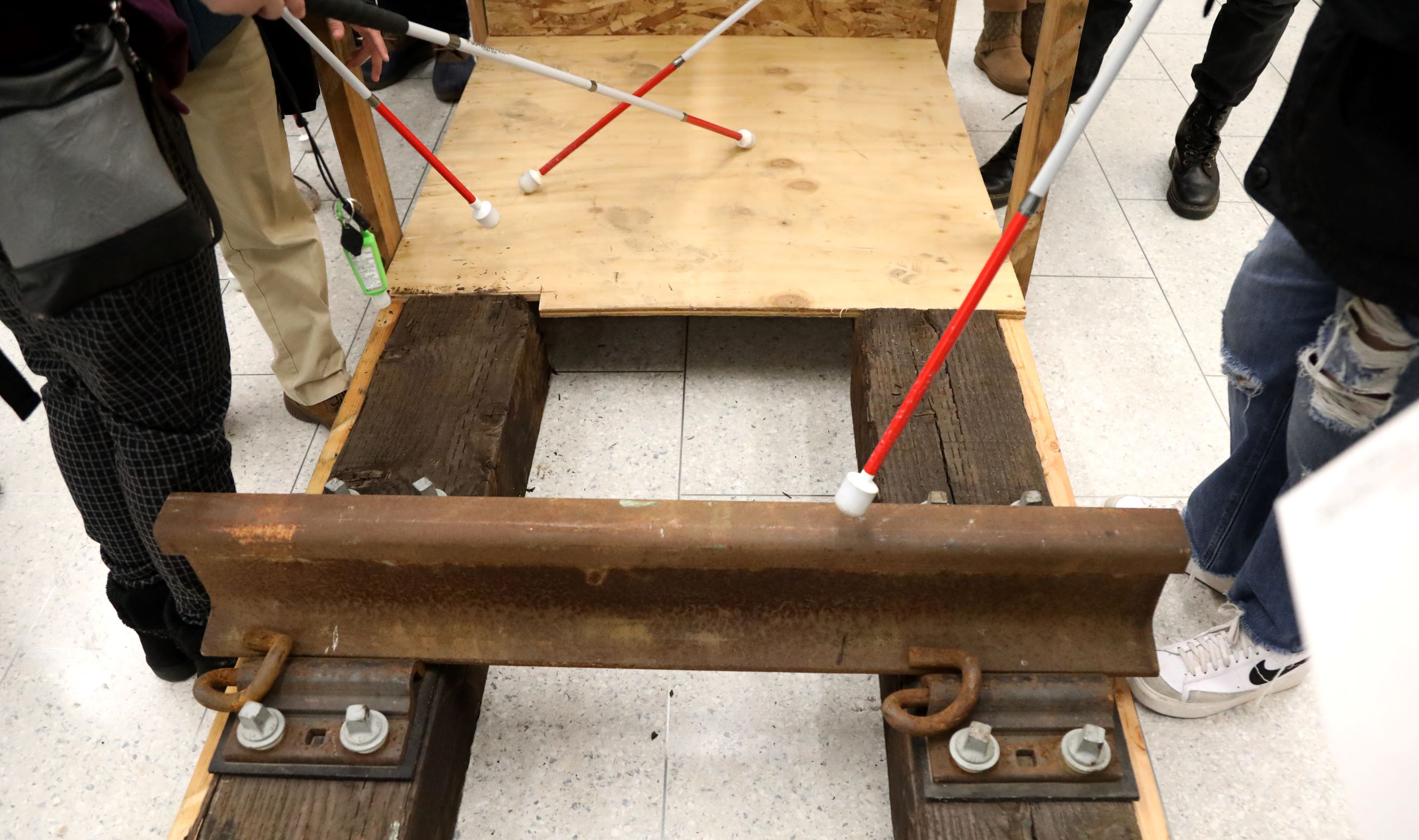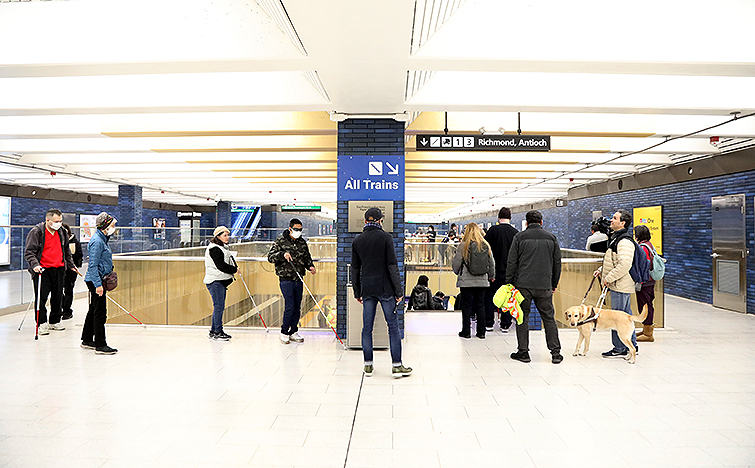Blind and low-vision riders gather at 19th St Oakland Station to learn how to navigate BART
Blind and low vision riders congregate in front of an opened door in a out of service Fleet of the Future train.
BART hosted a safety orientation for the blind and low-vision community on Tuesday to demonstrate how they can navigate the system on their own and welcome back riders with disabilities.
19th St Oakland Station was packed with attendees -- many with walking canes or service dogs, some on wheelchairs -- who traversed the newly remodeled concourse and platform. One platform at the station was out of service for the event to house an out-of-service Fleet of the Future train. BART staff wearing bright yellow vests and jackets guided attendees inside the opened train cars and demonstrated where priority seating, wheelchair areas, emergency instructions and Braille signages are located.
An estimated 200 people attendeed the orientation, the first of its kind since the COVID-19 pandemic, said BART Director of Access Robert Franklin.
"This is the first time we have demonstrated a new train," said Franklin. "All these people didn't know the BART system very well. This was a space where they could learn and explore where things are in a safe environment, in their own terms."
Two blind and low vision attendees learn how to use the emergency intercom inside a Fleet of the Future train
The idea to bring back this safety orientation emerged out of the 50th anniversary celebration BART hosted at Lake Merritt Station Plaza last September. At the event, Franklin began conversations with the San Francisco-based nonprofit The Lighthouse for the Blind and Visually Impaired to reinstate the event and re-acquaint the blind and low-vision community with riding BART.
The 50th anniversary celebration also served as a direct inspiration for improving the orientation. A segment of BART tracks made for demonstration at the celebration was a hit among the blind and low-vision attendees, and Franklin worked with BART workers from the Tracks Department to build a similar mock-up for the orientation. The mock-up consists of the trackway and the refuge area underneath a station platform (built with plywood) to educate attendees how to react if they accidentally fall onto the trackway and cannot get up to the platform.
For Sheri Albers, the Community Outreach Coordinator for The Lighthouse for the Blind, education about the refuge area is a life-saver -- including her own, after a scary experience where she nearly fall onto the trackway with a train pulling out of the station.
"Talking about it is one thing, and you can tell me about (where the refuge area is) until the cows come home," said Albers. "But I need to have my hands on it to get a real sense for it. I need to feel, if this happens to you, don't be afraid."
Attendees touch the mock-up of the trackway and refuge area with blind canes
Most of the attendees came out through The Lighthouse and the Fremont-based California School for the Blind, but there was a tremendous interest in the event through word of mouth and social media, said Albers. The Lighthouse brought its own materials to the event, including Braille maps of the BART system and of BART stations.
Attendees started coming into 19th Street Oakland Station a half-hour early and were very eager for the event to start, said Franklin. "It brought this community together."
The safety orientation is the first part of BART's engagement with the local blind and low-vision community. Following Tuesday's orientation, BART staff will host an online Town Hall for the blind and low vision community on February 28 to gather input on upcoming projects and to hear directly about how we can improve accessibility services. BART also has future plans to provide similar engagements with the deaf and hard-of-hearing community and the mobility impaired community.
BART continues to welcome back riders since the pandemic, and riders with disabilities make a significant portion who rely on BART as a lifeline to get around the Bay. Seven percent of BART's riders reportedly have a disability, which limit many to not be able to drive a car.
For Albers, who is low-vision herself, BART is her main mode of transport to travel from her East Bay home to San Francisco, where The Lighthouse is, and anywhere she wants to go.
"BART is my way to get out and be independent and self-reliant," said Albers. "Information is powerful and we want to ally the fear in our community of taking BART. Once you eliminate the fear, the world is in your hands."
Blind and low visions attendees walk around in the 19th St Oakland Station concourse



